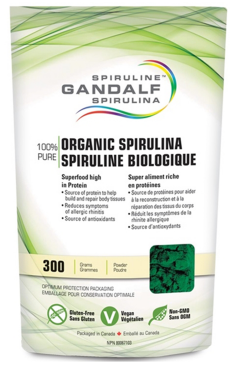You are here
Home ›The Dark Matter of Food

According to dominant cosmological theory, dark matter is a form of matter that exists in space and which accounts for 85% of the matter in the universe.
It is composed of particles that do not absorb, reflect, or emit light, so they cannot be detected by observing electromagnetic radiation. Dark matter can’t be seen directly, but physicists believe it exists because of how it affects other objects that can be observed directly. For example, evidence for dark matter comes from calculations showing that many galaxies would fly apart, or that they would not have formed or would not move as they do, if they did not contain a large amount of unseen matter.
What We Can See
Approximately 150 various nutrients in foods, being what they are and what we know about them to date, are considered essential to life and our existence. To this claim there is no dispute.
Magnesium and vitamin C for example. No one can dispute their proven essentiality as they relate to the beat of the heart or the formation of collagen. Essential nutrients commonly described in mainstream literature include sources of energy, micronutrients to activate enzymes that facilitate critical chemical reactions, and so on. But there is much more to food than what typically meets the common eye.
Natural whole food, as opposed to devitalized, refined and highly processed food (aka Ultra Processed Food or UPF), is inhabited by thousands of naturally occurring substances that are not currently deemed as essential by any Research Council or government. Such substances number in the thousands, as in the order of 28,000+.
Until recently none of these substances have been investigated thoroughly enough, routinely tracked or mapped by food chemists in labs, so as to fully comprehend their effect on human health or disease pathology. They have been discarded as non-essential and thrown away in the bathwater.

Professor Albert-Laszlo Barabasi, PhD, and his team of colleagues Northeastern University Northeastern University & Harvard Medical School, directs the Center for Complex Network Research in nutrition chemistry. Using highly sophisticated AI technology, advanced mapping techniques and genetic sequencing technology, Barabasi and his team have identified a fascinating and vast network of food chemicals that in contrast to convention, actually do play a critical role with regards to human health and the prevention of disease.
Don’t be misled by the term ‘chemicals’. I’m not talking undesirable creosol derived pesticides sprayed on plants or bisphenol A added to plastic to make it flexible. I’m not referring to chemicals that are toxic, whether they are man-made or not.
I’m referring to nutritional players in the orchestra of life that have existed in food for millennia, and that like us, evolved over millions of year by natural selection. Organic life is chemistry and everything that exists interacts chemically on some level with everything else that exists. Chemistry is about the study of matter and change. Simply put, all food, whether natural or not, represents a vast milieu of chemicals.
Convention thinks these unknown ‘junk’ chemicals simply don’t matter, that they’re inert and metabolized without any benefit to us. But the fact remains, and facts are bits of knowledge supported by evidence, that quite the opposite is true.
Only one third (2,906) of modern disease outcomes are associated with deficiencies of the 150 nutritional components currently recognized as essential. Obviously these substances are very important and are needed in the right amounts to not only survive, but also to thrive and perform well at high levels. Essential nutrients like vitamin E or zinc should never be underestimated, as they are commonly undersupplied through what we call food today. A better term for modern is food ‘artifact’. Most modern food looks like food and is eatable, but it falls woefully short of what food is supposed to do.
Like sub-atomic particles, here’s what interesting when we take a closer look. When the ‘dark matter’ of natural whole food is tracked and mapped with respect to its association with disease, up to two thirds (12,653) of all known disease links are identified by both correlation AND causation. This means that the dark matter of food, including an estimated 28,771 chemical components, are as crucial to our health and wellness as the 150 nutrients convention currently only seems to care about.
The human diet is enormously complex and consists of a great variety of dietary components that like the dark matter in space are far from being completely understood.
So what exactly does the dark matter in food consist of? The stuff that that rallies little public concern or conventional interest? Well, it’s a colossal number of strange sounding substances including phytochemicals, polyflavonoids, polyphenols, carotenoids, fatty acids, peptides, sterols, alkaloids, lectins, saponins, catechins, isoflavones, coumarins, organic acids, lupines, bacteria and much, much more. These substances, obviously misunderstood and underestimated for decades, are now rising to the top of scientific interest and investigation in functional medicine circles. You know, the only form of westernized medicine concerned with what actually causes disease.
Hawaiian Spirulina

A great example of a whole natural food rich in nutritional dark matter, perhaps the richest known and my staple favorite, is Hawaiian Spirulina. I never make a shake without it! Shake'nTake Guide This carefully selected strain of blue-green algae developed over many years of continuous cultivation on the Big Island of Hawaii, is literally teeming with amino acids, carotenoids, flavonoids, antioxidant pigments, iron, chlorophyll and thousands of phytochemicals that score super high on the ORAC scale (oxygen radical absorption scale).
Let’s go back in time to the 1980s to the origin of the Human Genome Project.There were those who criticized the mapping of the entire genome. They claimed that only a tiny fraction (1%) of the human genome was known to actually encode proteins, and because the remaining 99% of our DNA (at that time) was believed to be useless ‘junk DNA’, the naysayers argued that it would be a waste of time and money to map the whole thing. They emphasized that the ‘junk’ didn’t matter and that sequencing it would just needlessly prolong the work and raise the cost of the project.
Well it’s a good thing that American physician-geneticist Francis Collins and the scientists he led didn’t listen to these skeptics, because after the entire genome was sequenced in 2003 (after 15 years and a cost of over 3 billion dollars), it was discovered that up to two thirds of the health effects, and two thirds of all known disease mutations, came directly from that so-called useless junk DNA.
So much for that hypothesis, but I want to use this story as an analogy.
For decades the naysayers and vitamin bashers have discouraged the investigation of nutritional dark matter. “It doesn’t matter”, they said. “That useless crap serves no useful purpose.”
How wrong can wrong be? We now know due to extensive investigation and gene mapping by the right people, that over 65% of the health associations already recorded in the literature are associated with 99.5% of the biochemicals naturally present in whole food and until recently and to a very large extent, this association was never respected, and therefore never tracked, mapped or recorded.
Every day when we eat, we bombard ourselves with a literal barcode of chemicals. A typically breakfast for example exposes us to least 5,000-10,000 distinct biochemicals; some good, some bad, depending on what we ate. And what chemicals we bombard ourselves with, and precisely how they interact with our genome is very unique to each individual, unique to their immune system, unique to their nervous function and brain chemistry and of course, unique to that mysterious realm of gut biota contained within us called the microbiome.
The sweetness of any sugar when dissolved in solution can be measured with a refractometer and compared to a Brix scale for sugar sweetness. The sweetest sugar found in nature for example is fructose. It has a sweetness of 1.75 compared to sucrose, which is used as a reference standard. Sucrose has a sweetness of 1.
Synthetic sweeteners are considerably higher. For example, aspartame is 200, sucralose is 600 and lugduname is 300,000. These are all compared to the reference standard of sucrose, which is 1.
When the truth of dark food matter is finally vindicated by scientific evidence and revealed to the world in a way that can’t be denied by any skeptic, critic or naysayer, the measure of that sweetness for me, will fly right off the Brix scale!
But I won’t need to say, “I told you so, cause I already knew it so!”
Photo by JP Valery

As always...Stay Well and Live Free!
Dr.C
- Log in to post comments